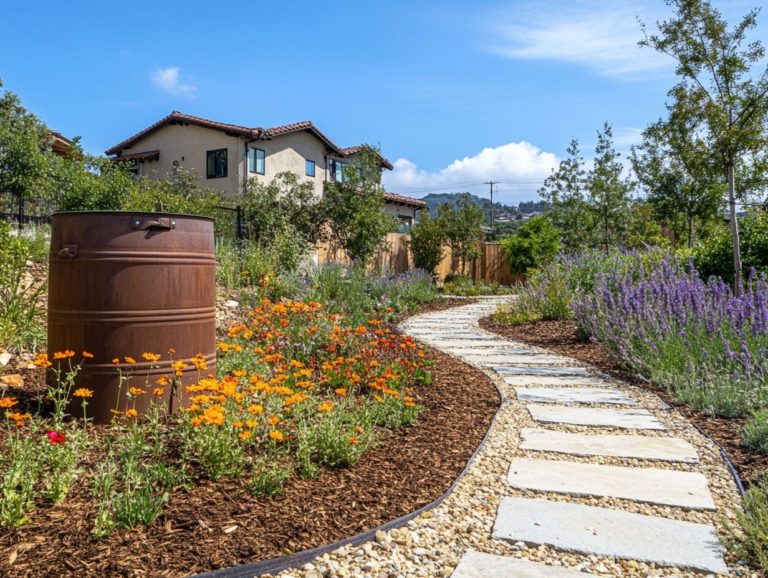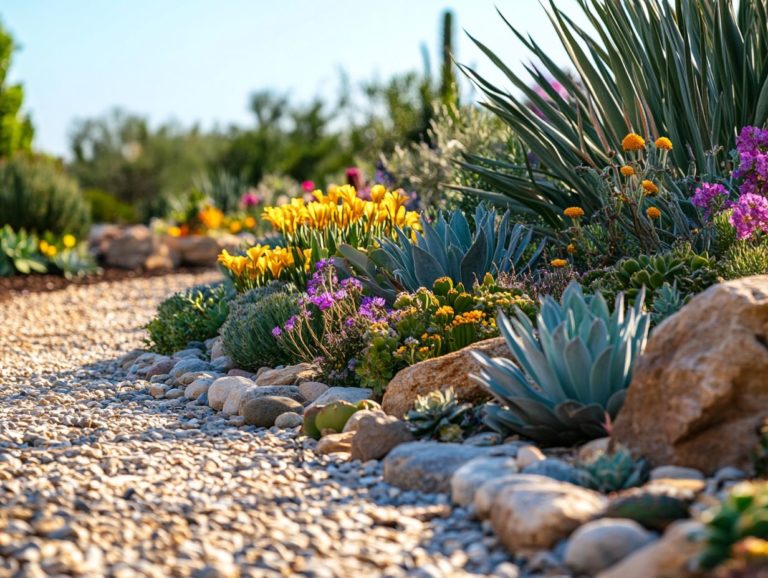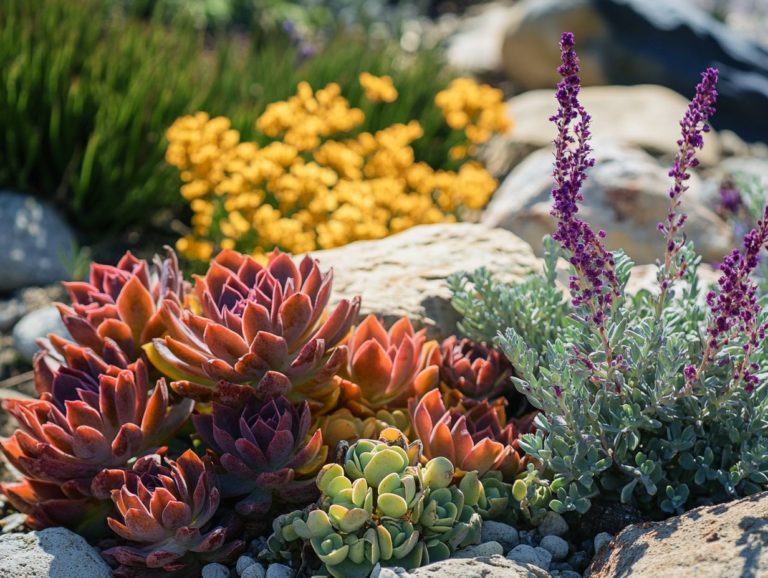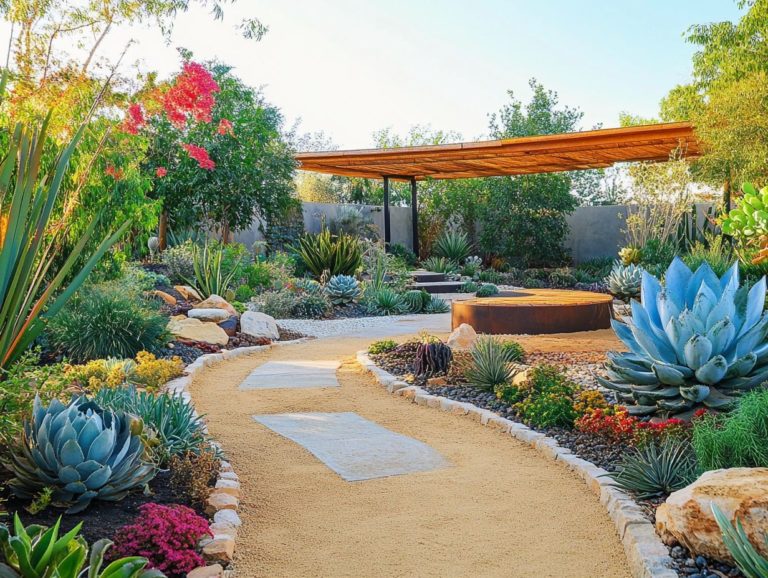Understanding the Role of Drip Irrigation
Drip irrigation is revolutionizing farming and gardening by providing a precise and efficient method for watering plants.
This article explores the many benefits of drip irrigation, including cost savings and improved efficiency. It also highlights the essential components for a successful system.
Additionally, it outlines best practices for installation and maintenance, showcases the crops that thrive with this method, and discusses its positive environmental impact.
Discover how drip irrigation can revolutionize your gardening like never before!
Contents
- Key Takeaways:
- Advantages of Drip Irrigation
- Components of Drip Irrigation Systems
- Installation and Maintenance of Drip Irrigation
- Common Crops and Plants that Benefit from Drip Irrigation
- Environmental Impact of Drip Irrigation
- Frequently Asked Questions
- What is drip irrigation and what role does it play in agriculture?
- How does drip irrigation compare to traditional irrigation methods?
- What are the benefits of using drip irrigation?
- Can drip irrigation be used in all types of soil?
- What are some common misconceptions about drip irrigation?
- How can I get started with using drip irrigation?
Key Takeaways:
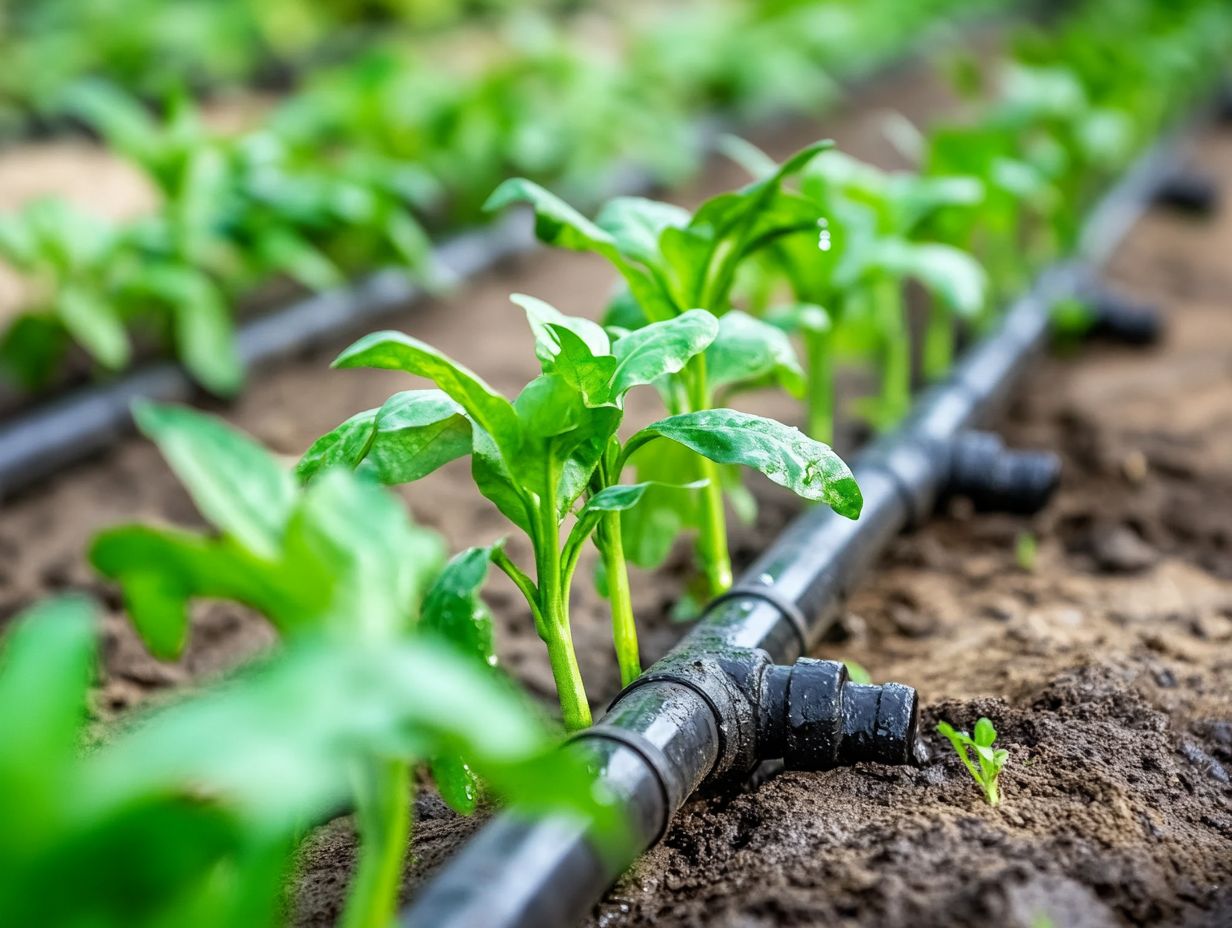
- Drip irrigation delivers small amounts of water directly to the roots, increasing efficiency and saving costs.
- The main components include tubing, emitters, and filters, working together to provide precise water delivery and minimize waste.
- This method suits various plants and crops, significantly reducing water waste and positively impacting the environment when properly installed and maintained.
What is Drip Irrigation?
Drip irrigation is an efficient method that channels water directly to the root zone of your plants through a network of tubing and emitters. This approach enhances water conservation and supports sustainable agricultural practices.
By minimizing water runoff and optimizing delivery, you ensure the vitality of both soil and plants. Drip irrigation consists of components like drip tubes, valves, filters, and pressure regulators, which work together to provide precise moisture application.
Maintaining consistent soil moisture levels nurtures robust plant growth while improving soil structure and nutrient availability. The reduced evaporation associated with drip irrigation means less wasted water, making it an eco-friendly choice.
This method allows you to achieve higher yields using significantly less water, demonstrating that a sustainable approach is both advantageous and essential for the environment.
Advantages of Drip Irrigation
The benefits of drip irrigation are numerous, providing you with unparalleled cost efficiency, water savings, and improved crop yields. It’s no wonder this method is favored for landscape management and sustainable agriculture.
By conserving water, it optimizes resources while enhancing soil health and reducing weed growth, ultimately easing your maintenance load.
Increased Efficiency and Cost Savings
Increased efficiency and cost savings make drip irrigation systems an appealing option, expertly optimizing water usage and significantly cutting operational costs.
This targeted method ensures water reaches the plant roots directly, reducing evaporation and runoff common pitfalls of traditional irrigation methods.
By streamlining water application, the drip system promotes a more sustainable approach to farming and enhances irrigation efficiency.
This transformation nurtures healthier crops and boosts agricultural economics, allowing you to allocate resources more effectively and invest in future innovations.
Components of Drip Irrigation Systems
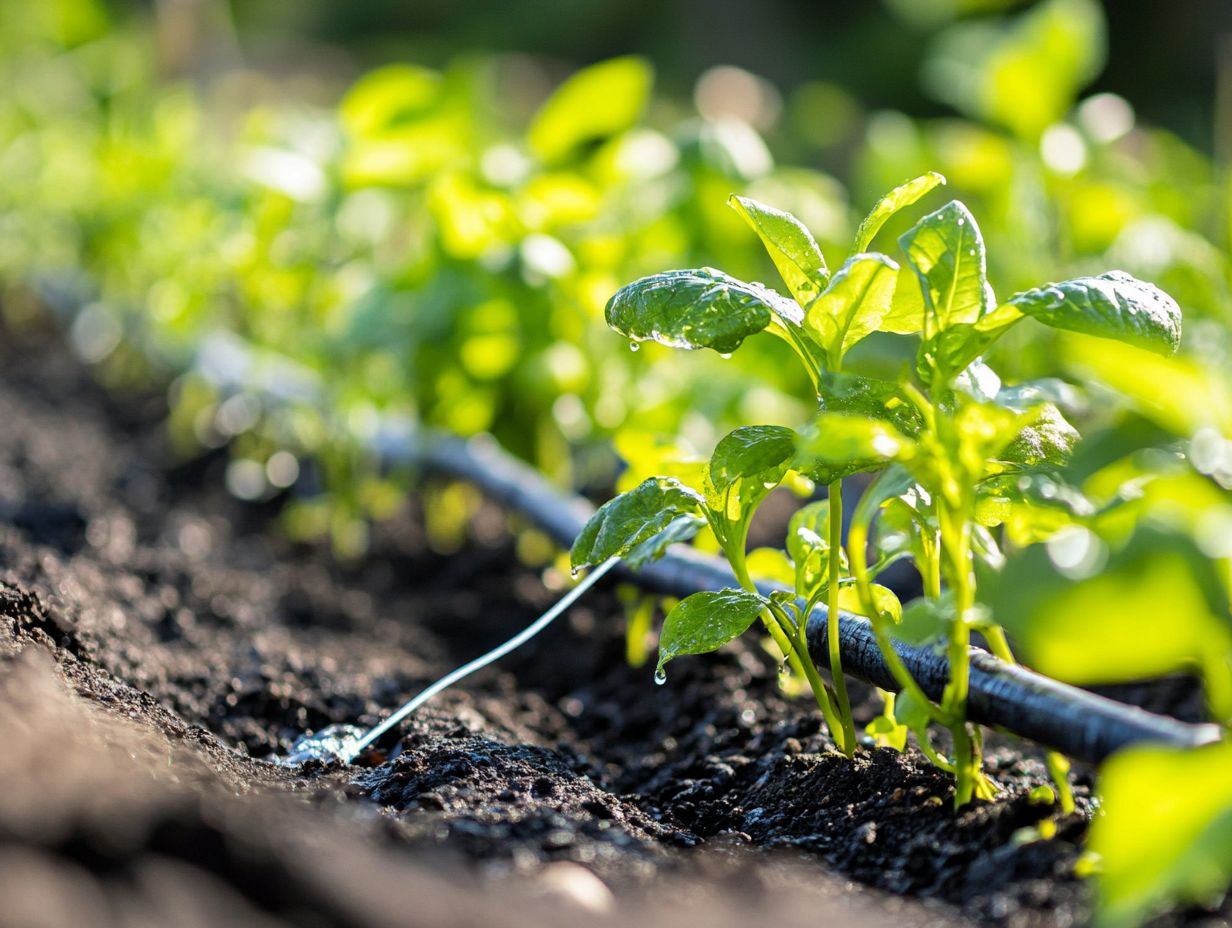
The components of drip irrigation systems are vital for effective water delivery. Key elements include drip emitters, drip tubing, main tubing, pressure regulators, filters, and backflow preventers. All these parts work together to create optimal irrigation zones.
Each component plays a crucial role in maintaining the system’s functionality while promoting the health of both crops and soil.
Main Components and their Functions
Key parts of a drip irrigation system are drip emitters, tubing, a controller, a pressure regulator, and a filtration system. Each part helps deliver water effectively to your plants. Understanding how these components work can transform your gardening experience and enhance plant growth.
Think of the irrigation controller as the brain of your system, managing when and how much water is delivered based on moisture levels and weather conditions. The pressure regulator ensures steady water flow, preventing damage to the system and making sure each emitter operates effectively. The filtration system is equally essential; it prevents clogging by removing debris and particles from the water, safeguarding the performance of your drip emitters.
With a clear understanding of these components, you can develop a more effective watering regimen that conserves water and significantly enhances the health and vitality of your plants.
Installation and Maintenance of Drip Irrigation
The installation and maintenance of drip irrigation systems are crucial for maximizing their longevity and effectiveness. This process involves careful setup followed by regular maintenance tips and seasonal checks to keep everything running smoothly.
Considering automatic timers and controllers that help manage watering can boost efficiency significantly, streamlining your landscape management and supporting sustainable agricultural practices.
Step-by-Step Guide and Best Practices
A comprehensive guide to installing drip irrigation systems includes several key steps: planning the layout, selecting the right components, and establishing an irrigation schedule that maintains optimal moisture levels for your plants. Embracing best practices also involves incorporating maintenance tips to enhance system efficiency.
Before you start the installation journey, evaluate your garden s unique characteristics, such as soil type and plant spacing. Creating a detailed blueprint allows you to visualize the entire setup, ensuring that each plant receives the water it needs.
Choosing high-quality components like drip tubing, emitters, and filters is essential for building a reliable system that can endure varying weather conditions. Regularly checking the system and adjusting your irrigation schedule in response to seasonal changes will further improve your plants’ health.
Exploring automation features, such as timers or smart controllers, can significantly reduce manual effort while optimizing water usage, leading to a flourishing garden and efficient water management.
Common Crops and Plants that Benefit from Drip Irrigation
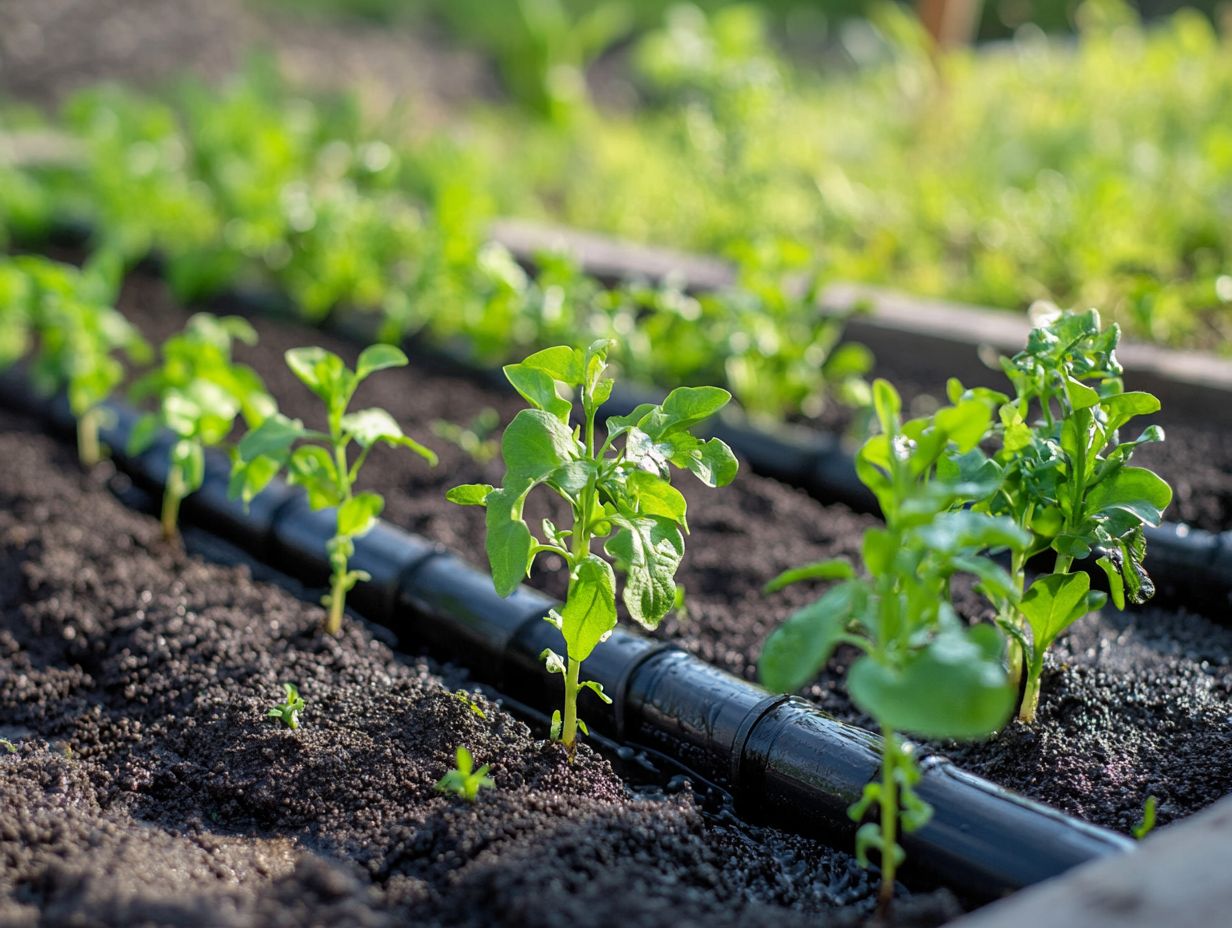
Drip irrigation offers exceptional advantages for a diverse range of common crops and plants, including those thriving in container gardening. By precisely delivering water and nutrients, this method can significantly boost your crop yields, aligning perfectly with each plant’s specific needs.
Moreover, in greenhouse settings, drip irrigation optimizes growth conditions throughout the year, ensuring that your plants flourish no matter the season.
Optimal Use for Different Types of Plants
Optimal use of drip irrigation varies for different types of plants. It s essential to consider the distance between water outlets, moisture levels, and nutrient levels to ensure maximum crop quality and yield.
By tailoring the irrigation system to the unique needs of each plant type, you can enhance overall growth and efficiency. For example, leafy greens thrive with closer emitter spacing. This helps maintain consistent moisture in the upper soil layers.
On the other hand, root vegetables benefit from a deeper, more spaced-out system that allows their roots to access water more effectively. Monitoring moisture levels is crucial. Over-saturation can lead to root rot, while inadequate hydration may stunt growth.
Integrating nutrients through the drip system improves plant health significantly. Understanding the best ways to provide plants with food ensures that each plant receives the right balance essential for robust development.
These tips will help you get the most out of your crops!
Environmental Impact of Drip Irrigation
Drip irrigation does wonders for the environment! It plays a crucial role in water conservation by significantly diminishing water waste an essential aspect of sustainable agriculture practices.
This method not only safeguards precious water resources but also fosters healthier ecosystems by reducing runoff and enhancing soil health.
Reducing Water Waste and Environmental Benefits
Reducing water waste stands out as a hallmark of drip irrigation. It offers substantial environmental benefits that include enhanced soil health and the promotion of sustainable agriculture initiatives.
By delivering water directly to the roots of plants with precision, this system minimizes unnecessary water usage while fostering better nutrient management.
This targeted approach conserves this vital resource and keeps the soil adequately hydrated. It avoids oversaturation that can lead to erosion or nutrient leaching.
When you leverage drip irrigation, you contribute to a healthier ecosystem. Improved soil health nurtures beneficial microorganisms and enhances the retention of organic matter.
Using less water also allows you to cut down on energy consumption typically associated with traditional irrigation methods. Ultimately, these systems enable agricultural communities to embrace more responsible practices, preserving vital resources for future generations.
Frequently Asked Questions
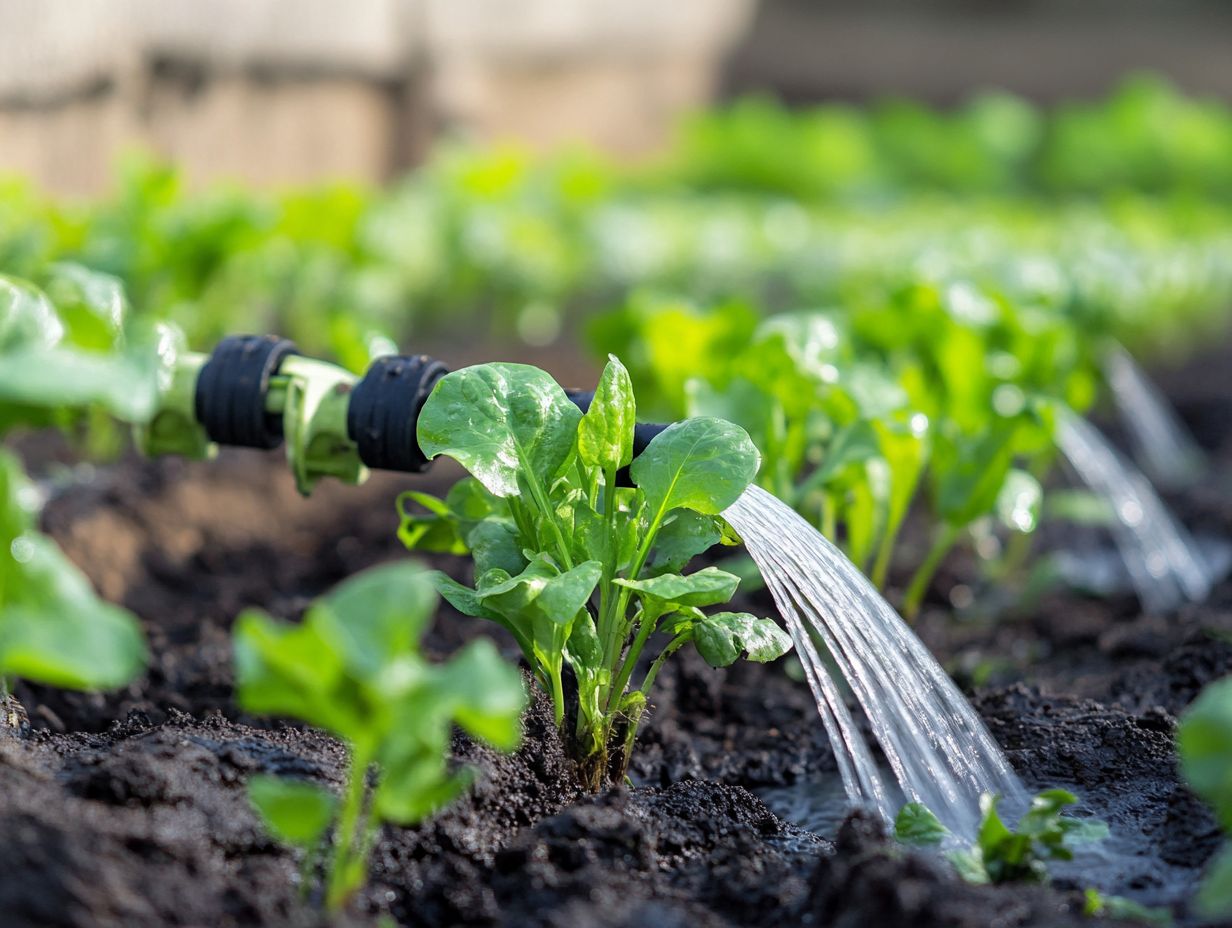
What is drip irrigation and what role does it play in agriculture?
Drip irrigation is a watering technique where water is directly delivered to the plant’s root system in small, consistent droplets. It helps farmers save water and boost crop growth!
How does drip irrigation compare to traditional irrigation methods?
In traditional irrigation methods, water is often sprayed over a large area, leading to significant water loss through evaporation and runoff. Drip irrigation delivers water directly to the roots, reducing waste and providing plants with the precise amount of water they need.
What are the benefits of using drip irrigation?
Drip irrigation offers several benefits, including water conservation, improved plant health, and increased crop yield. It also requires less labor and maintenance compared to traditional methods.
Can drip irrigation be used in all types of soil?
Yes, drip irrigation works in various soil types, including sandy, loamy, and clay soils. It s important to adjust the system and monitor soil moisture levels regularly to ensure proper distribution.
What are some common misconceptions about drip irrigation?
One common misconception is that drip irrigation is only suitable for small gardens or crops. In fact, it can be used for large-scale agriculture. Another misconception is that it is too expensive, but it can save money in the long run due to its efficiency.
How can I get started with using drip irrigation?
To get started with drip irrigation, plan and design your system. Choose the right equipment and ensure proper installation and maintenance.
Talking to an expert can help you understand the system better. Get ready to transform your gardening experience with this efficient method!


